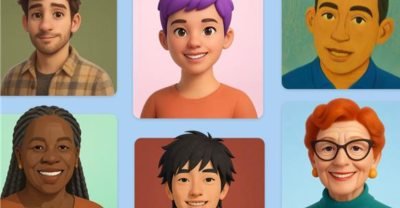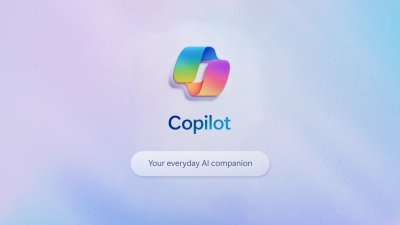Microsoft Elevates AI Interaction: Copilot Introduces Animated 'Portraits' for a More Human Touch
By: @devadigax

In a significant move to enhance the user experience and make artificial intelligence feel more approachable, Microsoft is rolling out an experimental feature for its Copilot AI assistant that gives it an animated face. Dubbed "Portraits," this innovative addition aims to transform the way users interact with AI, moving beyond purely textual or auditory exchanges to incorporate a visual dimension. Currently available in Copilot Labs for users in the US, UK, and Canada, the feature offers a selection of 40 stylized human avatars designed to make conversations with Copilot feel more natural and engaging.
This initiative underscores a broader trend in the AI industry: the quest to humanize digital interactions. For years, AI assistants have been disembodied voices or text prompts, powerful but often lacking the intuitive cues that facilitate human-to-human communication. By giving Copilot a visual persona, Microsoft is attempting to bridge this gap, allowing users to "chat with" an animated entity that can potentially convey more nuanced interaction through facial expressions and visual presence, even if subtle.
The decision to introduce "Portraits" is rooted in the principles of human-computer interaction (HCI). Research suggests that visual cues can significantly improve user engagement, foster a sense of trust, and even reduce the cognitive load associated with purely abstract interactions. When an AI assistant has a face, even a stylized one, it can feel less like a tool and more like a companion, potentially making complex tasks or extended conversations less daunting and more intuitive. This move could also address the "coldness" or impersonality often associated with advanced AI systems, injecting a much-needed element of warmth and familiarity.
Microsoft's Copilot has quickly become a cornerstone of its AI strategy, integrating across Windows, Microsoft 365 applications, and the Edge browser to assist users with a wide array of tasks, from drafting emails to summarizing documents and generating code. The introduction of "Portraits" is a natural evolution for a tool positioned as an "everyday AI companion." It reflects Microsoft's commitment to not just enhancing AI's functional capabilities but also refining its emotional intelligence and user interface to make it more accessible and pleasant for a broader audience.
The choice of "40 stylized human avatars" is particularly insightful. Rather than opting for hyper-realistic renditions, which could inadvertently trigger the "uncanny valley" effect – a phenomenon where human-like but imperfect robots or avatars elicit feelings of unease or revulsion – Microsoft has chosen a stylized approach. This design philosophy allows for expressive, recognizable human forms without crossing into the unsettling territory of near-perfect mimicry. These stylized faces can convey personality, emotion, and attention without requiring the complex rendering or potentially off-putting realism that could detract from the user experience.
While the "Portraits" feature is still experimental within Copilot Labs, its implications are far-reaching. It signals a future where AI interactions are not just functional but also visually rich and emotionally resonant. Imagine an AI assistant that can subtly nod in understanding, raise an eyebrow in confusion, or smile in affirmation. Such non-verbal cues, even if simulated, could profoundly deepen the user's connection with the AI, making it a more empathetic and effective digital partner. This could be particularly beneficial in educational settings, customer service, or even therapeutic applications where a sense of connection is paramount.
However, the introduction of visual AI companions also brings forth a new set of considerations. Ethical questions around anthropomorphism and the potential for users to attribute consciousness or sentience to an AI could arise. Microsoft will need to carefully navigate the balance between making AI more approachable and avoiding misleading users about its true nature. Performance considerations are also key; animating avatars in real-time requires computational resources, and ensuring a smooth, responsive experience across various devices will be crucial for widespread adoption.
The "
This initiative underscores a broader trend in the AI industry: the quest to humanize digital interactions. For years, AI assistants have been disembodied voices or text prompts, powerful but often lacking the intuitive cues that facilitate human-to-human communication. By giving Copilot a visual persona, Microsoft is attempting to bridge this gap, allowing users to "chat with" an animated entity that can potentially convey more nuanced interaction through facial expressions and visual presence, even if subtle.
The decision to introduce "Portraits" is rooted in the principles of human-computer interaction (HCI). Research suggests that visual cues can significantly improve user engagement, foster a sense of trust, and even reduce the cognitive load associated with purely abstract interactions. When an AI assistant has a face, even a stylized one, it can feel less like a tool and more like a companion, potentially making complex tasks or extended conversations less daunting and more intuitive. This move could also address the "coldness" or impersonality often associated with advanced AI systems, injecting a much-needed element of warmth and familiarity.
Microsoft's Copilot has quickly become a cornerstone of its AI strategy, integrating across Windows, Microsoft 365 applications, and the Edge browser to assist users with a wide array of tasks, from drafting emails to summarizing documents and generating code. The introduction of "Portraits" is a natural evolution for a tool positioned as an "everyday AI companion." It reflects Microsoft's commitment to not just enhancing AI's functional capabilities but also refining its emotional intelligence and user interface to make it more accessible and pleasant for a broader audience.
The choice of "40 stylized human avatars" is particularly insightful. Rather than opting for hyper-realistic renditions, which could inadvertently trigger the "uncanny valley" effect – a phenomenon where human-like but imperfect robots or avatars elicit feelings of unease or revulsion – Microsoft has chosen a stylized approach. This design philosophy allows for expressive, recognizable human forms without crossing into the unsettling territory of near-perfect mimicry. These stylized faces can convey personality, emotion, and attention without requiring the complex rendering or potentially off-putting realism that could detract from the user experience.
While the "Portraits" feature is still experimental within Copilot Labs, its implications are far-reaching. It signals a future where AI interactions are not just functional but also visually rich and emotionally resonant. Imagine an AI assistant that can subtly nod in understanding, raise an eyebrow in confusion, or smile in affirmation. Such non-verbal cues, even if simulated, could profoundly deepen the user's connection with the AI, making it a more empathetic and effective digital partner. This could be particularly beneficial in educational settings, customer service, or even therapeutic applications where a sense of connection is paramount.
However, the introduction of visual AI companions also brings forth a new set of considerations. Ethical questions around anthropomorphism and the potential for users to attribute consciousness or sentience to an AI could arise. Microsoft will need to carefully navigate the balance between making AI more approachable and avoiding misleading users about its true nature. Performance considerations are also key; animating avatars in real-time requires computational resources, and ensuring a smooth, responsive experience across various devices will be crucial for widespread adoption.
The "
Comments
Related News

Microsoft Elevates Copilot on Windows with Direct Office Document Creation and Cross-Platform Email Integration
Microsoft is rolling out a significant update to its Copilot app on Windows, transforming the AI assistant from a conversationa...
@devadigax | 10 Oct 2025
Microsoft is rolling out a significant update to its Copilot app on Windows, transforming the AI assistant from a conversationa...
@devadigax | 10 Oct 2025
 AI Tool Buzz
AI Tool Buzz